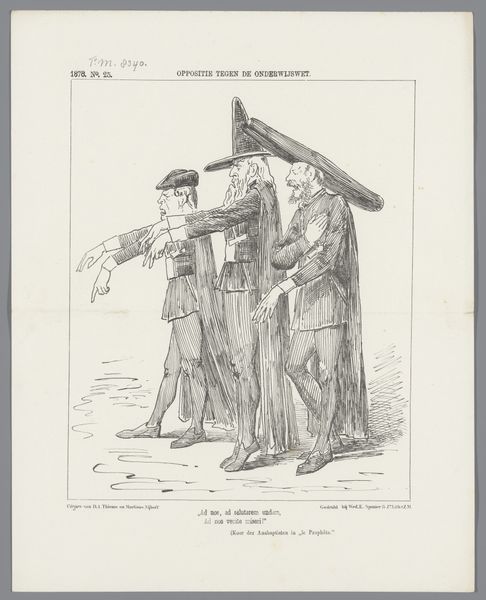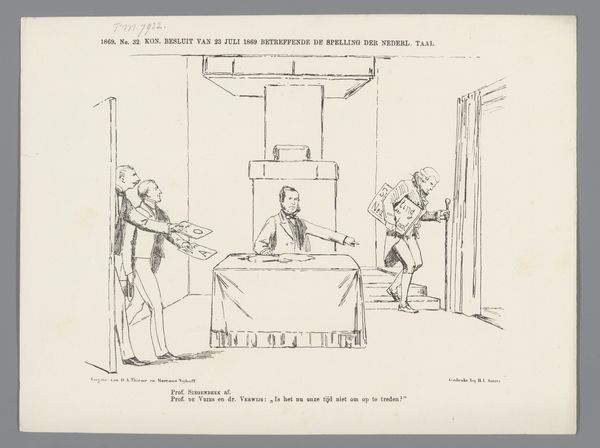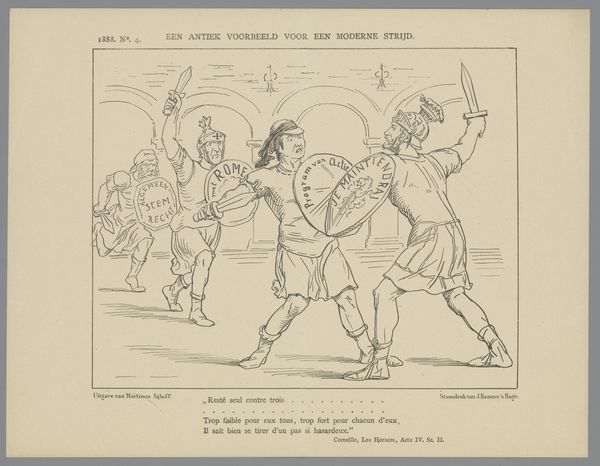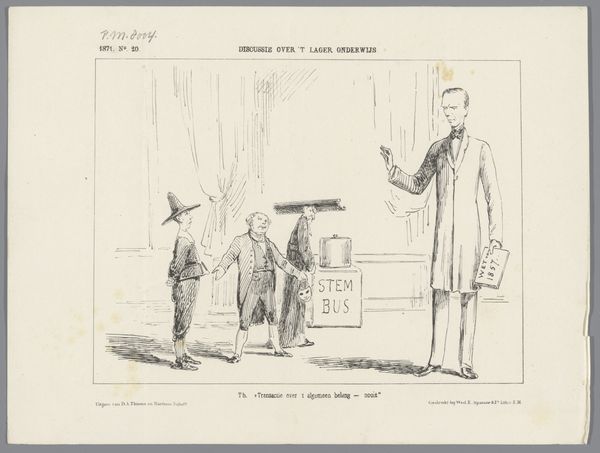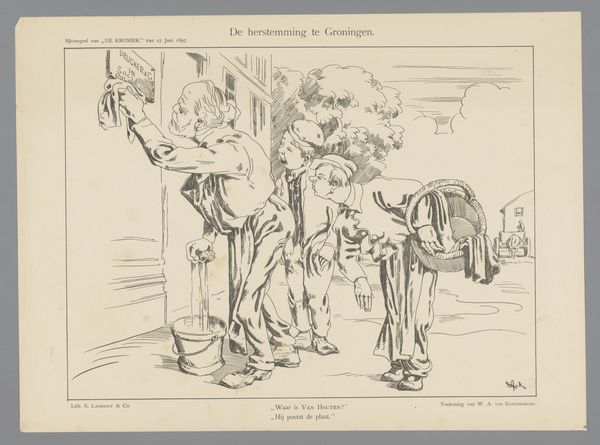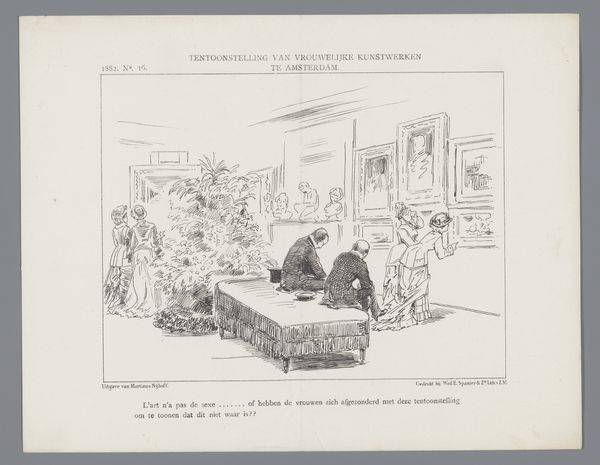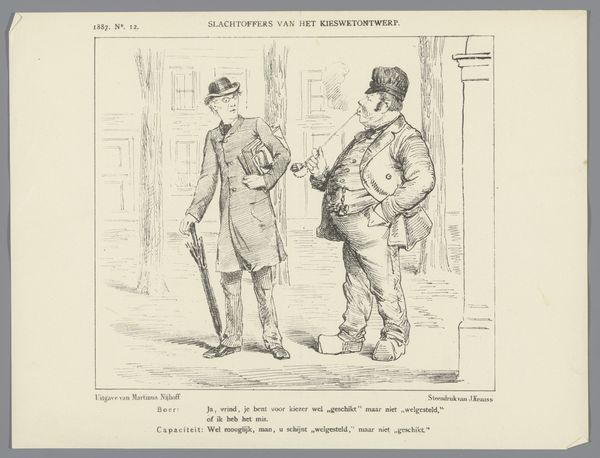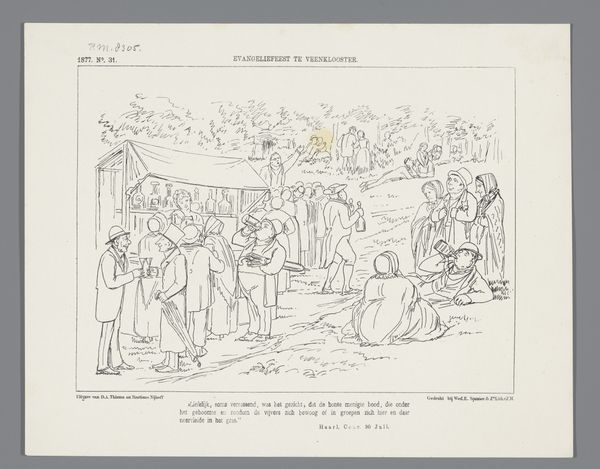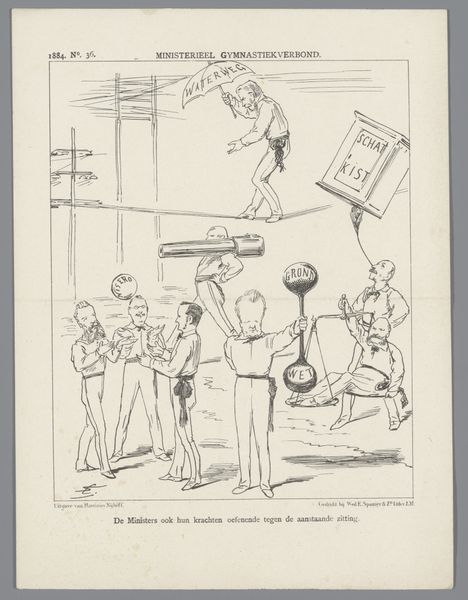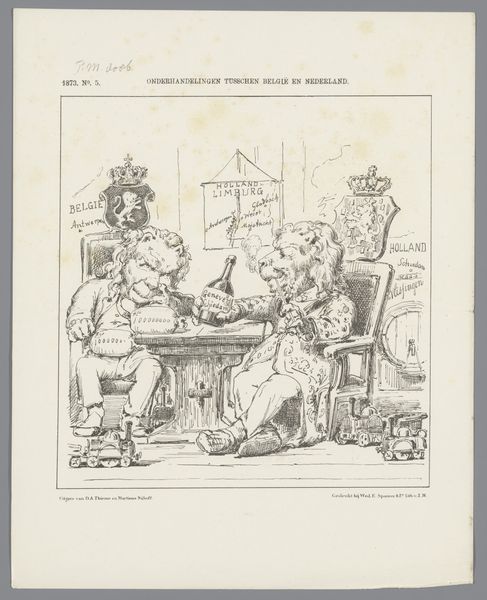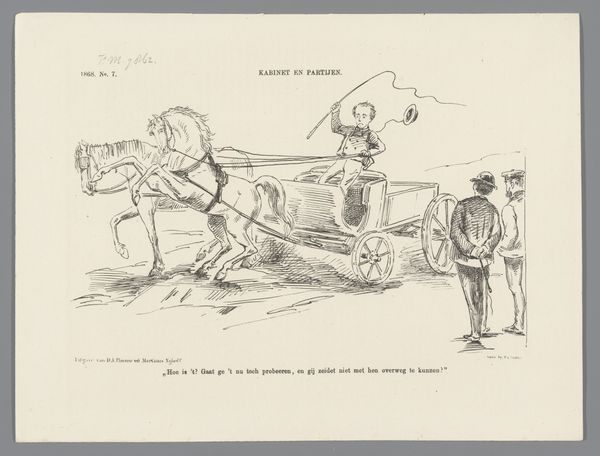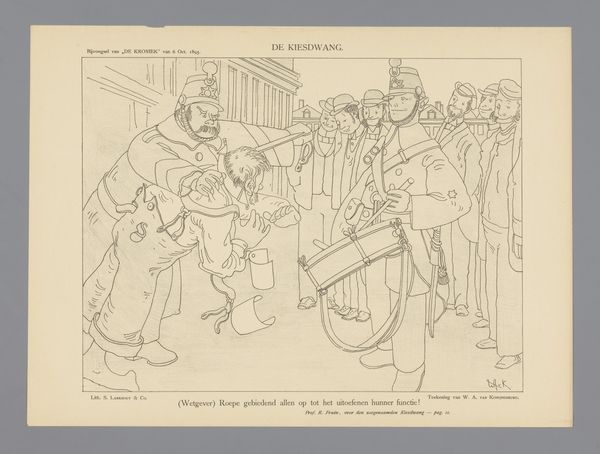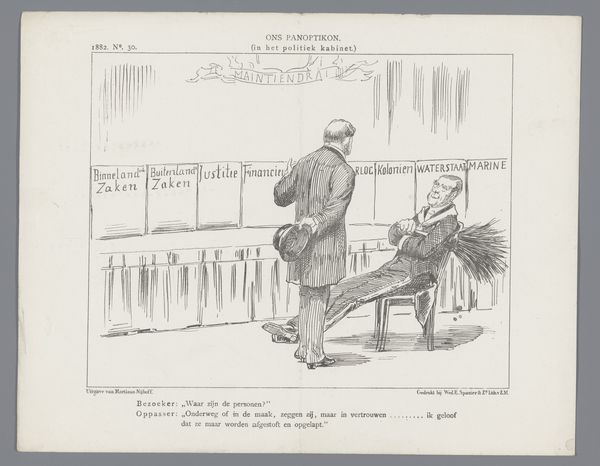
drawing, ink, pen
#
drawing
#
narrative-art
#
caricature
#
figuration
#
ink
#
line
#
symbolism
#
pen
#
modernism
Dimensions: height 303 mm, width 408 mm
Copyright: Rijks Museum: Open Domain
Curator: This is a drawing called "Gebr. Hoogerhuis," attributed to Willem van Konijnenburg, and thought to be from around 1897. It employs pen and ink. What’s your first reaction to it? Editor: The initial mood is cynical. I'm drawn to the stark contrast between the allegorical figure of justice on the left and the cartoonish rendering of the political figures on the right, a clear dichotomy between ideal and reality. Curator: Right. The piece appeared as a narrative illustration, essentially a political cartoon. What's fascinating is Konijnenburg's use of symbolism, filtered through a modernist style of rendering form. You'll see line work here employed as social commentary on power. What appears to be at stake? Editor: The "Gebr. Hoogerhuis" refers, of course, to a business or institution – likely something with legal ramifications, given the figure of justice. I immediately want to investigate Hoogerhuis himself and what exactly he and his organization represented. It seems like powerful people are bending the system—but how exactly are they getting access? Are they exploiting loopholes in manufacturing? Or using consumer deception? Curator: Precisely. The textual elements confirm a dialogue regarding keeping a cell "good and tight," yet the guard indicates there is still space. Clearly, this concerns manipulation of legal confinement and systemic injustices—a blatant act of powerful figures obstructing justice, highlighting the inherent corruption in governance. Editor: Yes. And observe the artist's employment of caricature to underscore their misdeeds and satirize official power. Their exaggerated features highlight their disreputable actions; it's designed to directly challenge viewers to reckon with the social impact. Also, it’s compelling to think about how the distribution method shapes our engagement; because it appeared within ‘De Kroniek’ news journal, we might need to interpret this drawing in the framework of Dutch journalism and political print media of the late 1890s. Curator: And don't forget the interplay of pen and ink. The physical process matters, shaping how these social commentaries are delivered to us. Its status as reproducible, circulated material gives this drawing a voice – quite literally, a visual quote taken from an otherwise obscure publication. Editor: Right. Examining these figures within a historical framework encourages an acute consideration of power and influence in public life. Curator: I agree, digging beneath the layers reveals uncomfortable yet critical perspectives on structural operations. Editor: Agreed. It underscores the important relationship between form, function, distribution, and the making of meaning.
Comments
No comments
Be the first to comment and join the conversation on the ultimate creative platform.
